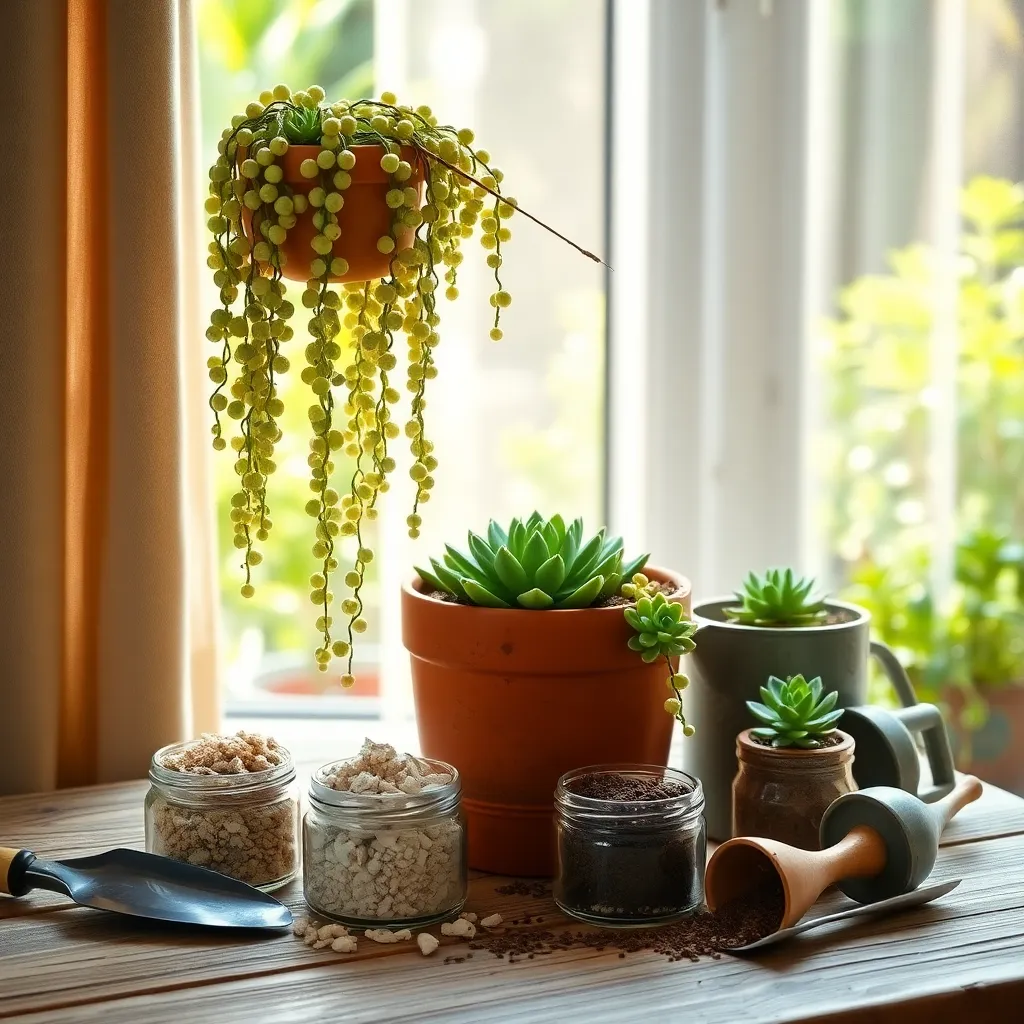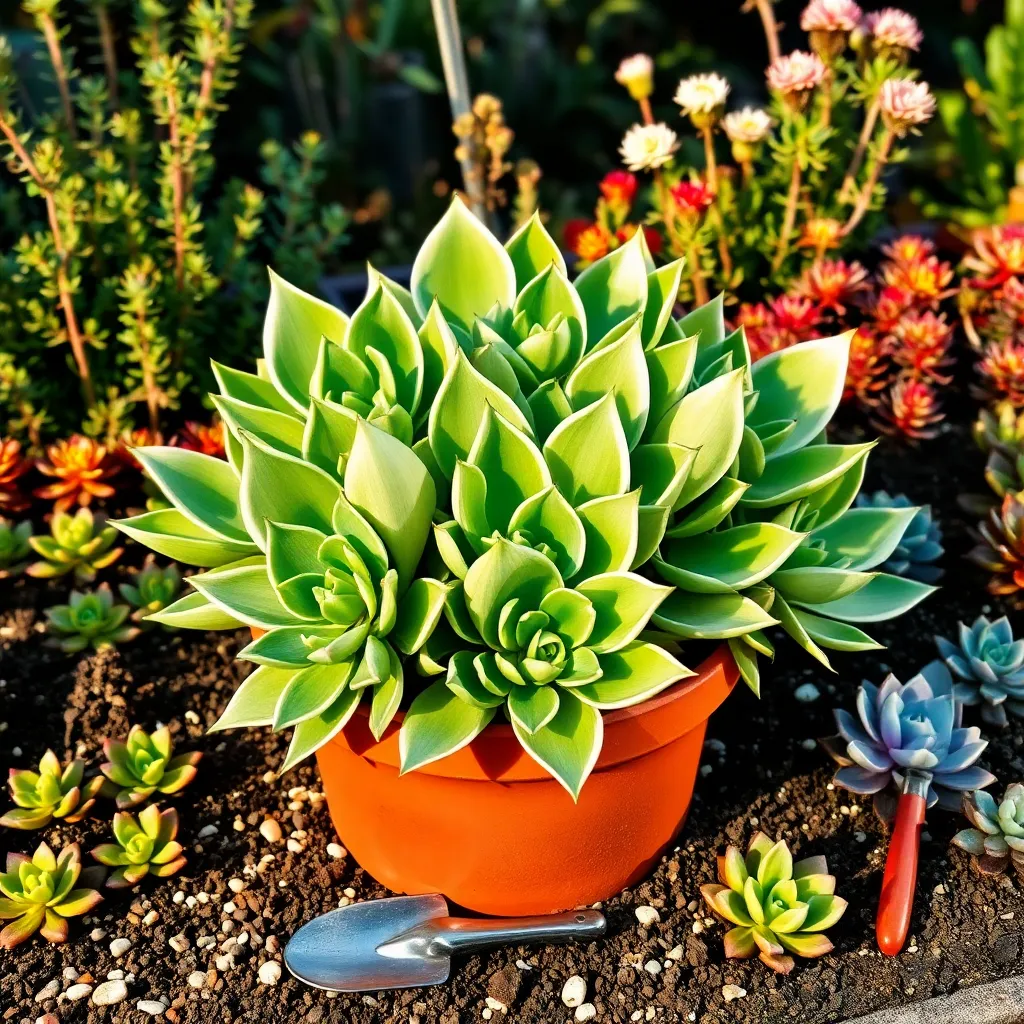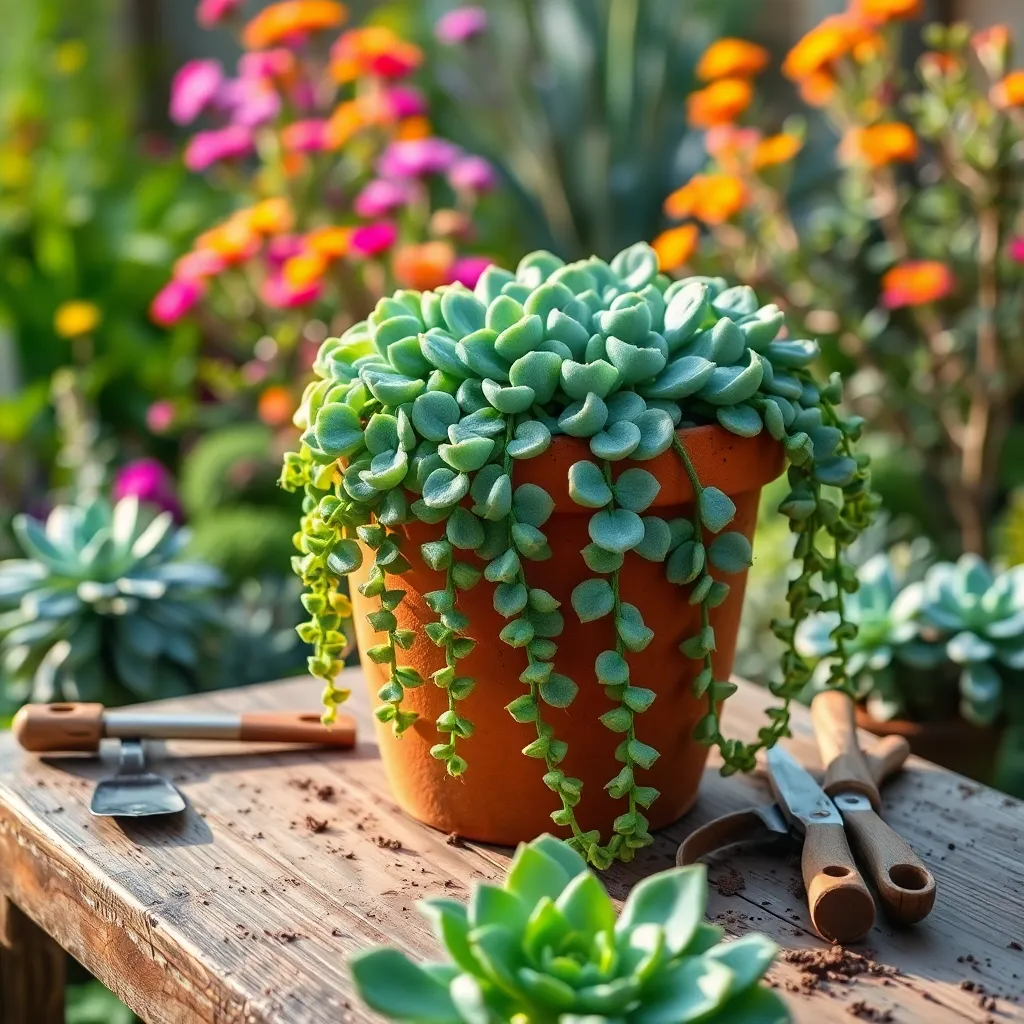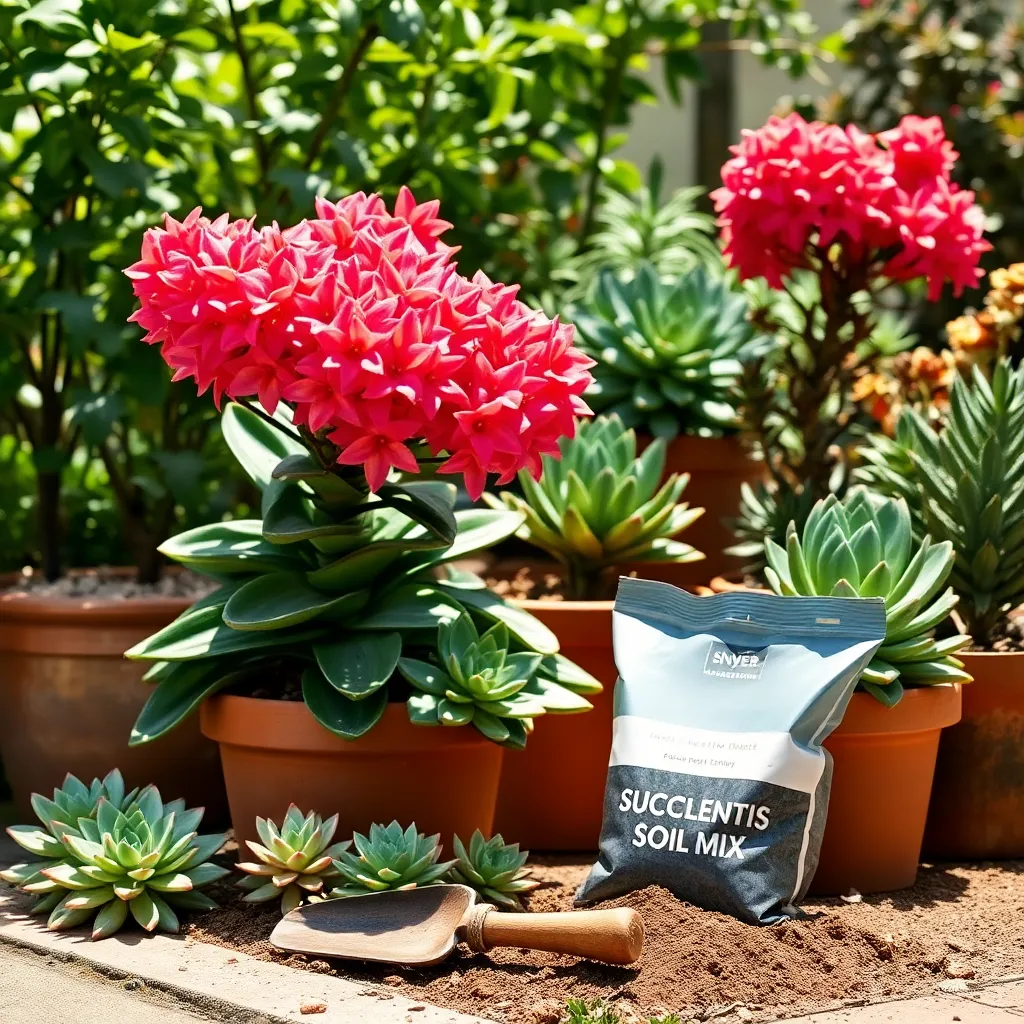Gardening is a journey filled with delightful discoveries, and nothing embodies this excitement quite like the world of succulents. Whether you’re a green-thumbed veteran or a curious newcomer, mastering the art of crafting the perfect soil mix can transform your succulent garden into a thriving oasis. This guide is your passport to unlocking the secrets of succulent success, providing you with tried-and-true mixes that cater to the unique needs of these resilient beauties.
With the right soil mix, you’ll not only see your succulents flourish but also experience the joy and pride that comes with nurturing healthy, vibrant plants. You’ll find that the knowledge shared here empowers you to cultivate a succulent haven that brings beauty and tranquility to your home. Embark on this rewarding adventure, and feel confident that these techniques will lead to thriving plants and endless satisfaction.
String of Pearls (Senecio rowleyanus)

String of Pearls (Senecio rowleyanus) is a fascinating succulent known for its unique, bead-like leaves that cascade beautifully. To ensure optimal growth, you need a well-draining soil mix that mimics its natural arid environment.
It’s essential to use a soil mix that combines cactus soil with additional drainage components like perlite or coarse sand. A typical mix might be two parts cactus soil, one part perlite, and one part coarse sand, helping prevent root rot by allowing water to drain quickly.
Watering should be done sparingly, allowing the soil to dry out completely between waterings. During the growing season, water your String of Pearls approximately every two weeks, adjusting frequency based on the humidity and temperature of your environment.
For those with more experience, consider adding a small amount of pumice to the mix for superior drainage and aeration. This can be particularly beneficial if you’re growing your String of Pearls in a pot without drainage holes, as pumice helps wick away excess moisture.
Panda Plant (Kalanchoe tomentosa)

The Panda Plant, scientifically known as Kalanchoe tomentosa, is a charming succulent that delights with its soft, furry leaves. To ensure optimal growth, providing the right soil mix is crucial for this plant, much like other succulents.
Choose a well-draining soil mix to prevent root rot, which is a common issue with succulents. A blend of cactus soil mixed with perlite or pumice works exceptionally well, ensuring excess water drains quickly.
While the Panda Plant is drought-tolerant, it thrives with a consistent watering schedule during the growing season. Allow the soil to dry out completely between waterings, and reduce the frequency in winter to prevent overwatering.
Advanced gardeners might consider adding some sand to the soil mix to enhance drainage further. This plant enjoys bright, indirect sunlight, so placing it near a window with filtered light will keep its leaves vibrant and healthy.
Burro’s Tail (Sedum morganianum)

Burro’s Tail (Sedum morganianum) is a delightful succulent known for its trailing stems and plump, blue-green leaves. To ensure its health, use a soil mix that is well-draining and allows for proper air circulation around the roots.
Start with a base of cactus or succulent potting mix, which you can enhance by adding extra perlite or pumice. This adjustment helps improve drainage and prevents the roots from becoming waterlogged, a common issue with Burro’s Tail.
While Burro’s Tail thrives indoors, it can also flourish outdoors in warm climates. Ensure it receives bright, indirect light to maintain its vibrant color and prevent the leaves from dropping.
Watering should be done cautiously, allowing the soil to dry out completely between waterings. During its growing season in the spring and summer, a light watering every two to three weeks is usually sufficient.
For those looking to propagate Burro’s Tail, simply pluck a few healthy leaves and lay them on top of moist, well-draining soil. Within a few weeks, they should begin to root and produce new growth, adding to your collection of these charming succulents.
Aloe Vera (Aloe barbadensis miller)

Aloe vera, known scientifically as Aloe barbadensis miller, thrives best in well-draining soil, mimicking its native desert environment. For an ideal soil mix, combine equal parts of cactus potting mix and coarse sand or perlite to enhance drainage and prevent root rot.
When planting aloe vera, ensure the pot has drainage holes to avoid water accumulation. Watering should be infrequent yet thorough, allowing the soil to dry completely between waterings, typically every three weeks in the growing season.
It’s crucial to place aloe vera in a spot with bright, indirect sunlight, as direct exposure can scorch the leaves. During the winter months, reduce watering further and move the plant to a cooler location if possible, to mimic its natural dormancy period.
For more advanced care, consider feeding aloe vera with a diluted, balanced fertilizer once a month during the growing season. Repotting is recommended every two to three years to refresh the soil and provide room for growth, ensuring the plant remains healthy and vibrant.
Flaming Katy (Kalanchoe blossfeldiana)

The Flaming Katy (Kalanchoe blossfeldiana) is a popular succulent known for its vibrant blooms that can brighten any indoor space. To ensure these plants thrive, use a well-draining soil mix that mimics their native Madagascar environment, such as a blend of cactus soil and perlite.
It’s important to plant your Flaming Katy in a container with drainage holes to prevent root rot, a common issue with succulents. Water sparingly, allowing the soil to dry out completely between waterings, typically every two to three weeks depending on humidity levels.
For optimal growth, place Flaming Katy in a spot where it can receive bright, indirect sunlight. Direct sunlight can scorch the leaves, so consider a location near an east-facing window to balance light intensity.
Advanced care involves regular deadheading, which encourages new blooms and prevents the plant from becoming leggy. Additionally, fertilize lightly with a balanced, water-soluble fertilizer once a month during the growing season to maintain vibrant blooms.
Conclusion: Growing Success with These Plants
In cultivating the perfect environment for your succulents, we delved into five fundamental relationship concepts: understanding the importance of drainage, recognizing the value of aeration, balancing moisture retention, choosing the right mineral components, and adjusting for climate conditions. Each of these elements mirrors the care and attention needed in nurturing thriving relationships—be it with plants or people.
To immediately enhance your succulent care, start by assessing your current soil mix and make necessary adjustments based on the insights shared. This simple action can lead to flourishing plants, just as small changes can invigorate personal relationships.
Bookmark this article as your trusty guide to succulent success. By saving these insights, you’ll have a ready reference to help both your plants and relationships thrive over time.
As you continue your journey, remember that just like plants, relationships require ongoing nurturing and adaptation. With consistent care and attention, you’ll be well on your way to cultivating connections that are as resilient and vibrant as a healthy succulent garden. Let’s grow together!

